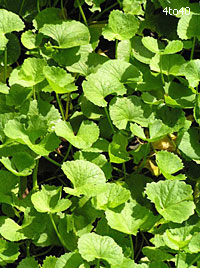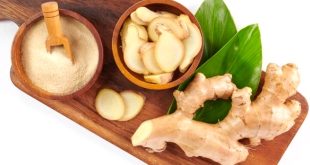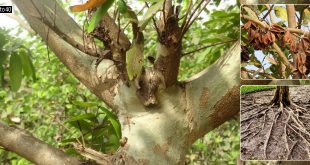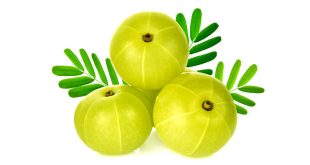Centella Asiatica (Pennywort, Indian Pennywort, Artayniya-E Hindi, Jal Brahmi) — Family Name: Apiaceae
Botanical Name: Centella Asiatica
Common Name: Pennywort, Indian Pennywort, Artayniya-E Hindi, Jal Brahmi
Part Used: Whole Plant
Habitat: Grown in waterlogged places throughout India.
Uses: It is Tonic, Diuretic and Alternative. It is used in treatment of leprosy and known to ameliorate the symptoms of the disease and improves general health of the patient. It is a brain tonic and stimulates hair growth.
Introduction
 Centella asiatica is a small herbaceous annual plant of the family Mackinlayaceae or subfamily Mackinlayoideae of family Apiaceae, and is native to India, Sri Lanka, northern Australia, Indonesia, Iran, Malaysia, Melanesia, New Guinea, and other parts of Asia. Common names include Gotu Kola, Asiatic Pennywort, Indian Pennywort, Luei Gong Gen, Takip-kohol, Antanan, Pegagan, Pegaga, vallaarai, Kula kud, Bai Bua Bok, Brahmi (this last name is shared with Bacopa monnieri) and rau má (Vietnamese). In Assamese it is known as Manimuni. It is used as a medicinal herb in Ayurvedic medicine and traditional Chinese medicine. Botanical synonyms include Hydrocotyle asiatica L. and Trisanthus cochinchinensis (Lour.). In Telugu Language this is known as “Saraswathi Plant” in India.
Centella asiatica is a small herbaceous annual plant of the family Mackinlayaceae or subfamily Mackinlayoideae of family Apiaceae, and is native to India, Sri Lanka, northern Australia, Indonesia, Iran, Malaysia, Melanesia, New Guinea, and other parts of Asia. Common names include Gotu Kola, Asiatic Pennywort, Indian Pennywort, Luei Gong Gen, Takip-kohol, Antanan, Pegagan, Pegaga, vallaarai, Kula kud, Bai Bua Bok, Brahmi (this last name is shared with Bacopa monnieri) and rau má (Vietnamese). In Assamese it is known as Manimuni. It is used as a medicinal herb in Ayurvedic medicine and traditional Chinese medicine. Botanical synonyms include Hydrocotyle asiatica L. and Trisanthus cochinchinensis (Lour.). In Telugu Language this is known as “Saraswathi Plant” in India.
Description
The stems are slender, creeping stolons, green to reddish green in color, interconnecting one plant to another. It has long-stalked, green, reniform leaves with rounded apices which have smooth texture with palmately netted veins. The leaves are borne on pericladial petioles, around 20 cm. The rootstock consists of rhizomes, growing vertically down. They are creamish in color and covered with root hairs.
The flowers are pinkish to red in color, born in small, rounded bunches (umbels) near the surface of the soil. Each flower is partly enclosed in two green bracts. The hermaphrodite flowers are minute in size (less than 3 mm), with 5-6 corolla lobes per flower. Each flower bears five stamens and two styles. The fruit are densely reticulate, distinguishing it from species of Hydrocotyle which have smooth, ribbed or warty fruit.
The crop matures in three months and the whole plant, including the roots, is harvested manually.
Culinary Use
Centella is used as a leafy green in Sri Lankan cuisine, where it is called Gotu Kola. In Sinhalese (Sri Lanka) Gotu conical shape and Kola leaf. It is most often prepared as mallung; a traditional accompaniment to rice and curry, and goes especially well with vegetarian dishes such as parippu’ (dhal), and jackfruit or pumpkin curry. It is considered quite nutritious. In addition to finely chopped gotu kola, mallung almost always contains grated coconut and may also contain finely chopped green chilis, chili powder (1/4 teaspoon), turmeric powder (1/8 teaspoon) and lime (or lemon) juice.
A variation of the extremely nutritious porridge known as Kola Kenda is also made with Gotu Kola by the Sinhalese people of Sri Lanka. Kola Kenda is made with very well boiled red rice (with extra liquid), coconut milk and Gotu Kola which is liquidized. The porridge is accompanied with Jaggery for sweetness. Centella leaves are also used in the sweet “pennywort drink.”
In Indonesia, the leaves are used for sambai oi peuga-ga, an Aceh type of salad, also mixed into asinan in Bogor.
In Vietnam and Thailand this leaf is used for preparing a drink or can be eaten in raw form in salads or cold rolls. In Malay cuisine the leaves of this plant are used for ulam, a type of Malay salad.
Ayurvedic Medicine
In India it is popularly known by a variety of names: Bemgsag, Brahma manduki, Brahmanduki, Brahmi, Ondelaga (North India, West India), Gotu kola, Khulakhudi, Mandukparni, Mandookaparni, Mandukaparni (South India), or Thankuni depending on region. It is often confused with Bacopa monnieri which is the more famous “Brahmi”, both have some common therapeutic properties in Vedic texts and both are used for improving memory. However, current research has clearly established the difference in pharmacological activities of these two herbs.
 Kids Portal For Parents India Kids Network
Kids Portal For Parents India Kids Network




